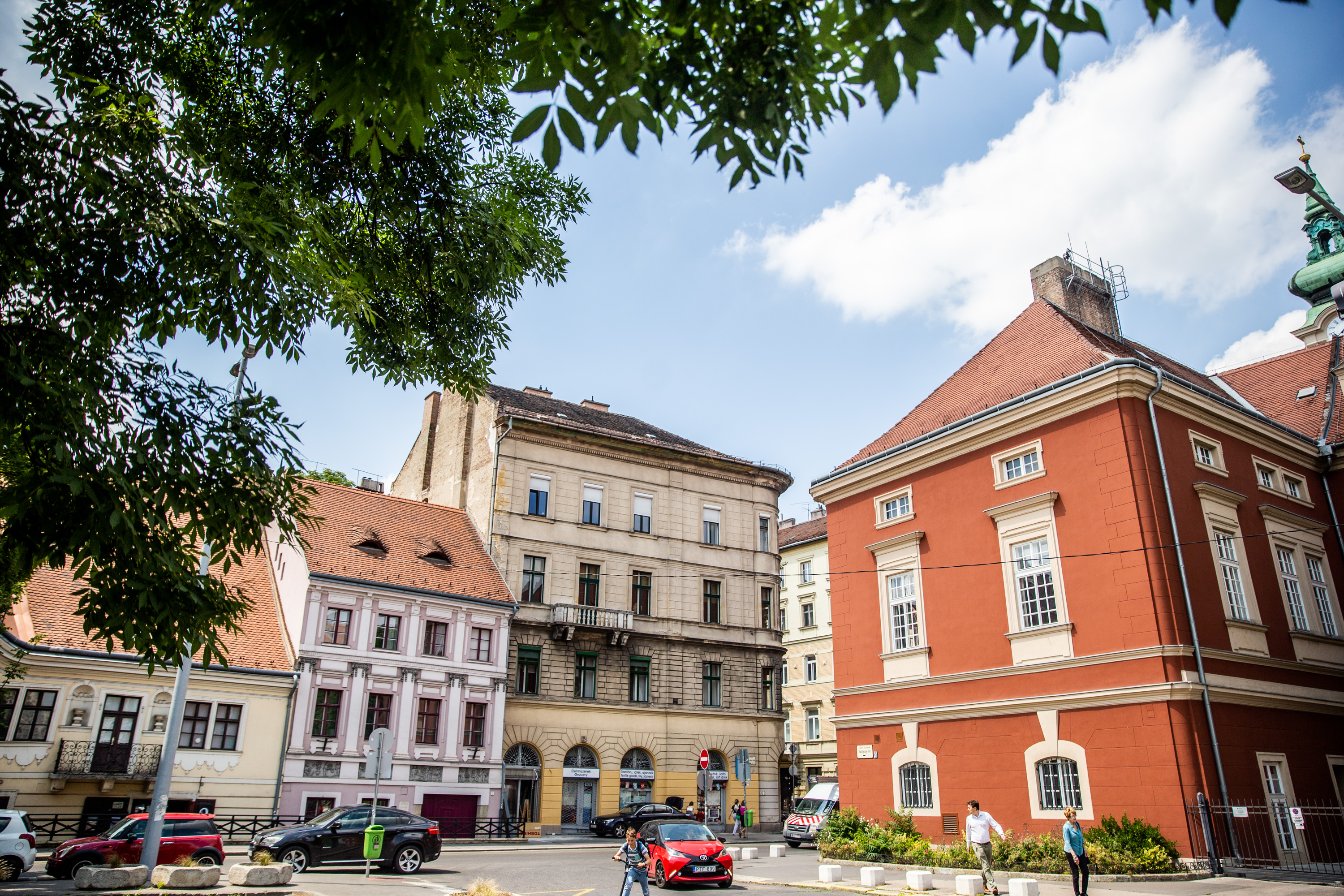One of Budapest’s most interesting and beautiful parts is located in the 1st and 2nd districts. Although the Danube bank and the nearby Castle District suggest a tourist-heavy area, walking around Víziváros, you can quickly find places where the crowds are relatively small and the scenery is better. It’s worth leaving Fő utca and continuing on to Batthyány tér to discover Baroque cottages, winding cobbled streets, historic palaces, houses reminiscent of Transylvanian folk architecture, and chic contemporary buildings. And the stunning panoramic views are an added bonus.
The winding streets of the Castle District and the parks, along with the tranquillity of the suburbs, are not matched by many. But Víziváros has managed to come close. If you appreciate a neighbourhood with a variety of houses, stories and, of course, spots and terraces to relax as much as we do, head on a stroll in this area. Víziváros is close to our hearts for a reason: the panoramic view of the Danube and the gorgeous architecture can easily sweep anyone off their feet. But there is much more to it than just a stroll on the riverside or a visit to the main square, so
we say, leave Fő utca (literally the main street) and dive into the mysteries of Kacsa utca, Medve utca, Iskola utca, Szabó Ilonka utca, and many more.
we say, leave Fő utca (literally the main street) and dive into the mysteries of Kacsa utca, Medve utca, Iskola utca, Szabó Ilonka utca, and many more.
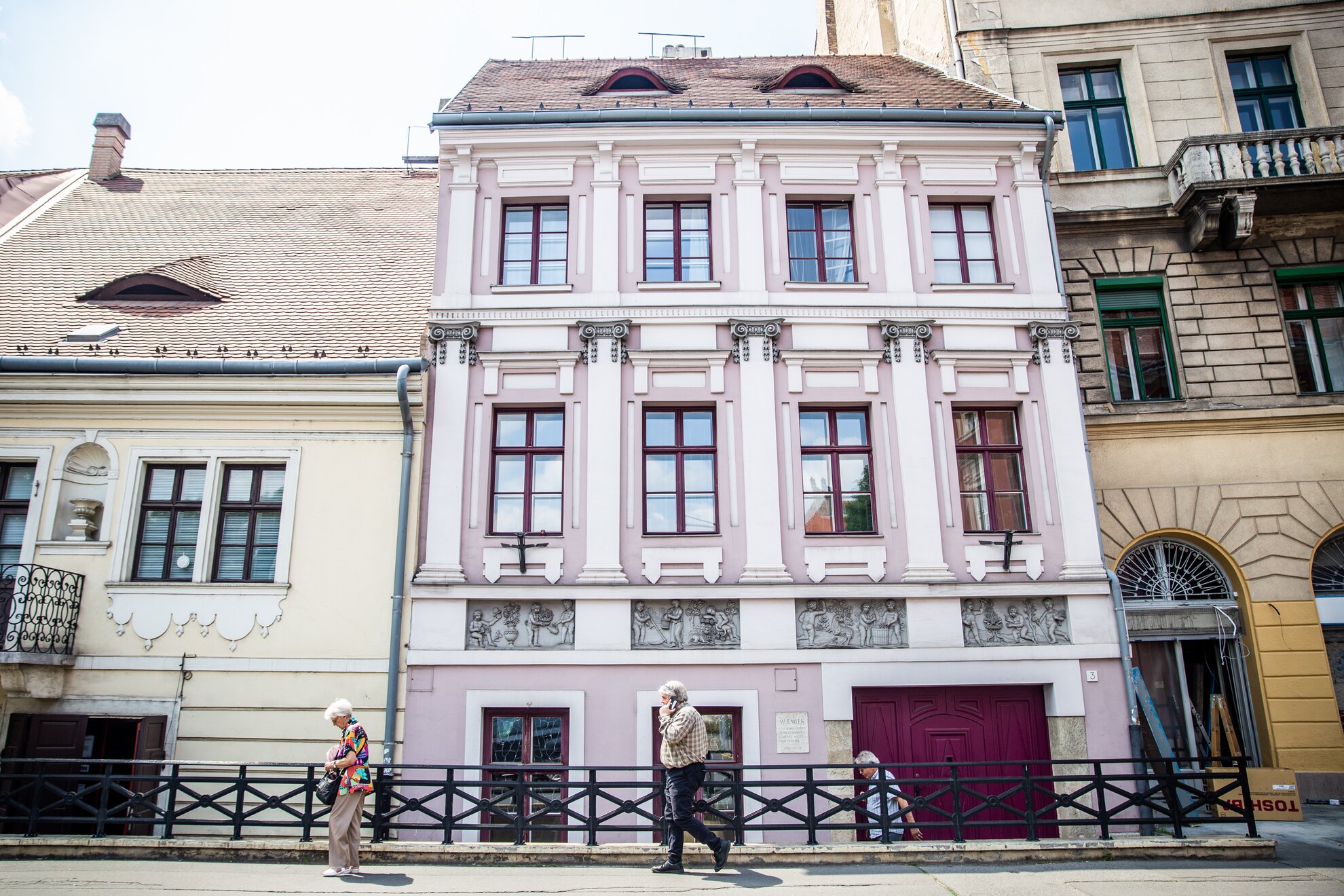
Departure from Batthyány tér
Batthyány tér is the ideal starting point. Besides being the most prominent square in Buda, it offers a stunning view of the Parliament. Also, there are quite a few exciting buildings in the immediate vicinity. One of them is the red house on the square’s edge, which today houses the Hungarian Charity Service of the Order of Malta, but its history dates back to the Ottoman era. Originally the site was the mosque of Tojgun Pasha, but after the reconquest of Buda, Bosnian Franciscans built a Baroque monastery and later a church (the Church of Stigmatisation of Saint Francis), which still contains Baroque furnishings made by the monks. Years later, the brick-red monastery was taken over by the sisters of St. Elisabeth, who converted part of it into a hospital.
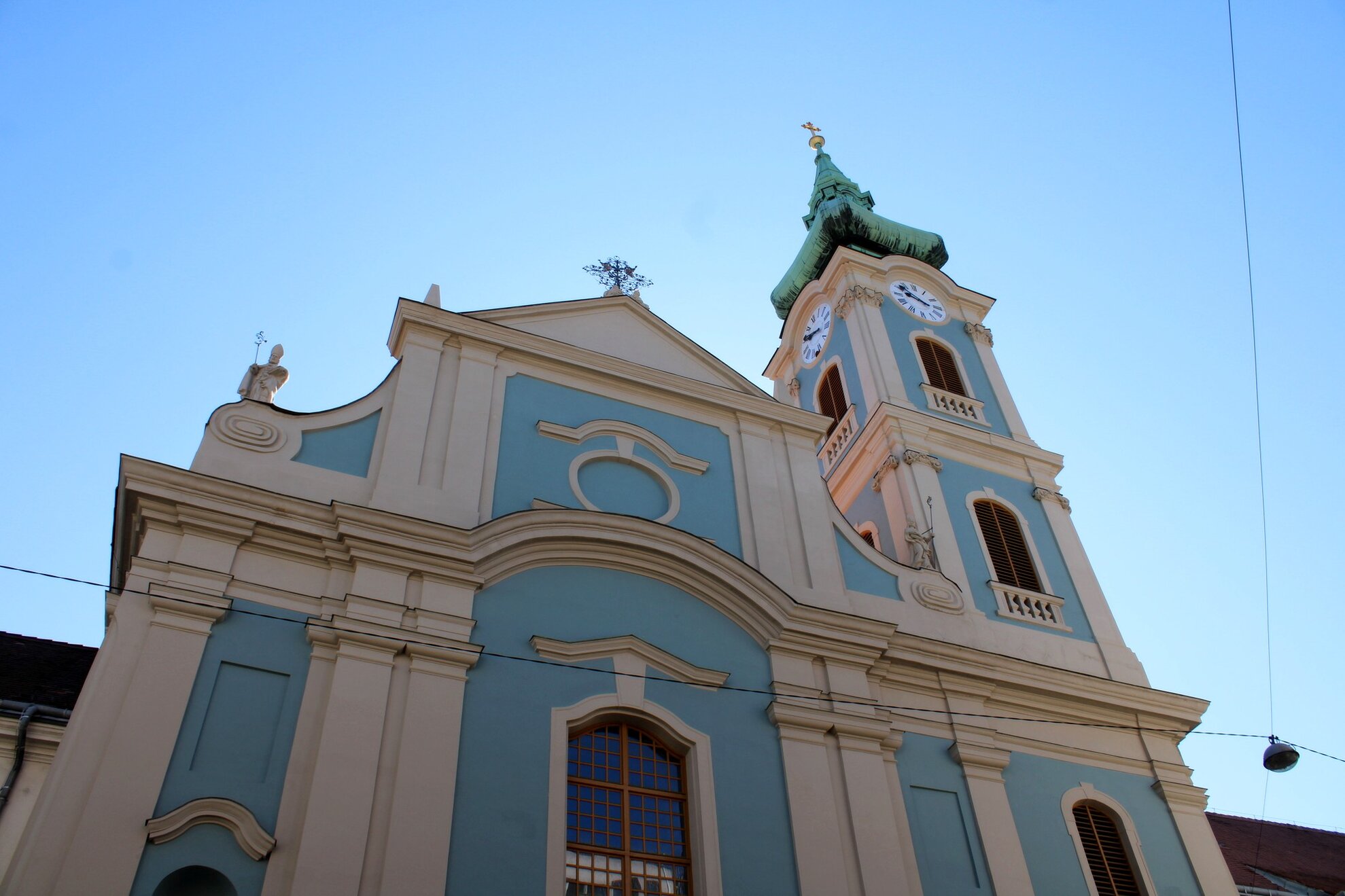
Before heading along Fő utca, have a good look at the market hall and the two houses next to it. It was completed in 1901 and was one of the largest market halls built in Budapest during the monarchy, with 690 stalls inside. By the 1930s, the number of visitors had diminished, and there was talk of converting it into an indoor tennis court. That did not happen as it was the site of the large Budapest flower market until the 1970s, and then it was rebuilt in its present form in 2003.
However, two special houses stand next to it: one in Protestant Baroque (also known as “zopf” or “braid” style) and one in Rococo style. Négy évszak ház (Four Seasons House, 3 Batthyány tér) was built in the late 18th century in Protestant Baroque style and takes its name from the reliefs that decorate its façade. The other house (4 Batthyány tér) was one of the most fashionable places in the area at the time, frequented by a wide range of celebrities, and legend has it that Casanova himself stayed here at the Fehér Kereszt Fogadó (White Cross Inn).
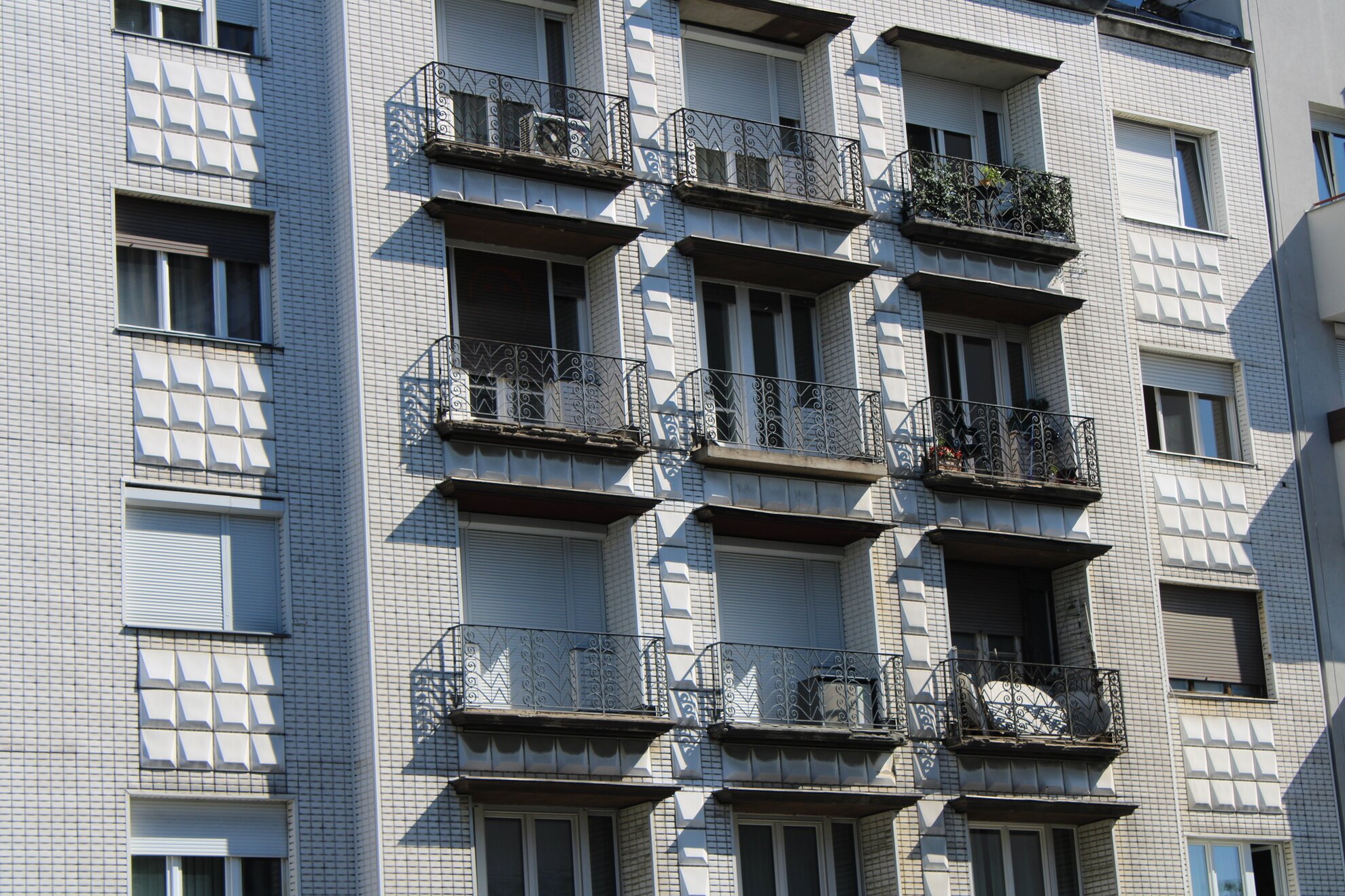
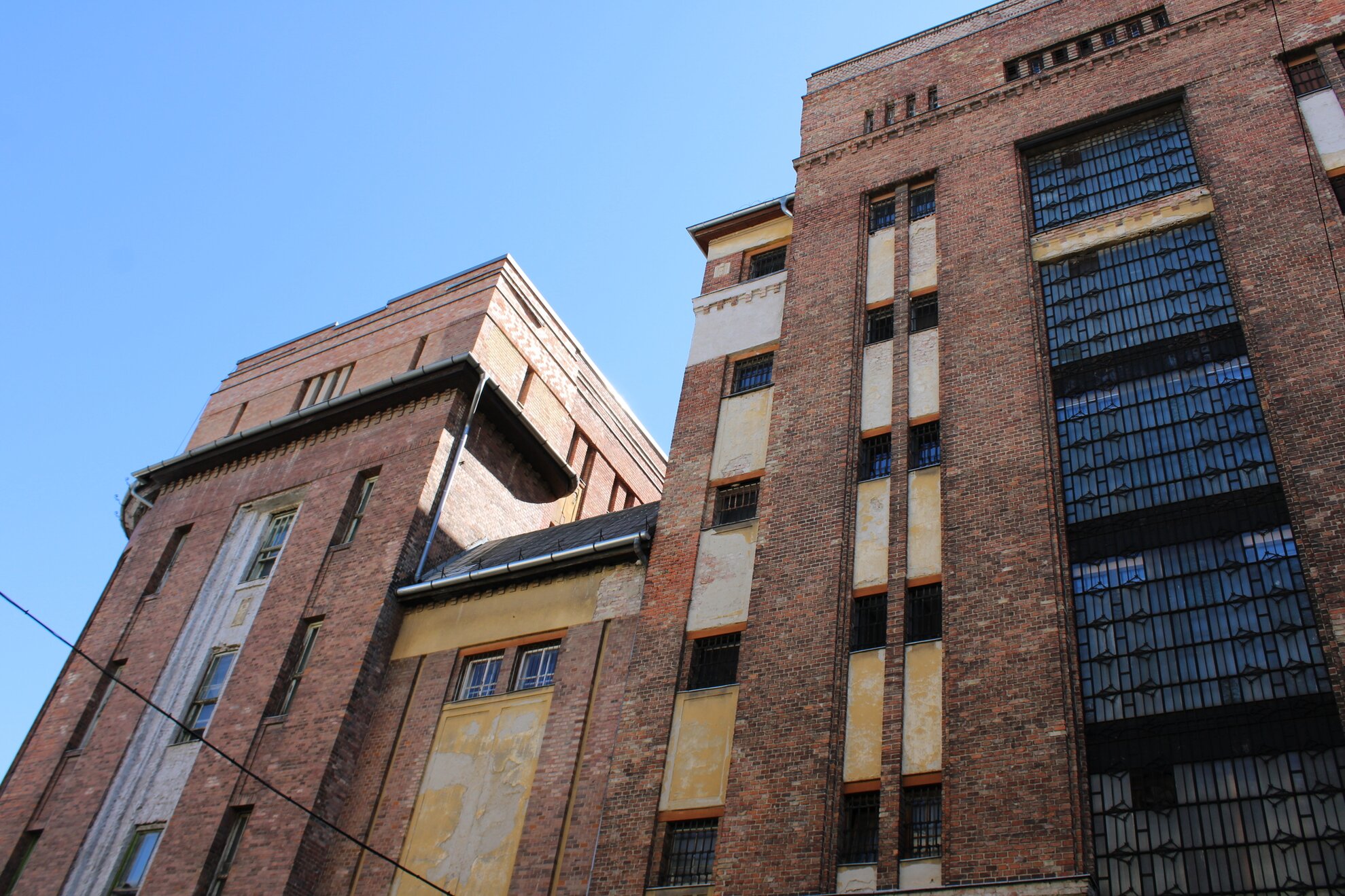
Hidden spaces and the prison on Fő utca
After leaving Batthyány tér, head north along Fő utca. If you prefer a stroll along the Danube, you can also take Bem rakpart, but then you’ll miss the Király Thermal Baths and some charming squares. After crossing Csalogány utca, you soon reach Nagy Imre tér, where the iconic statue Mackós-kút (Bear Fountain) stands since 1957. Behind the square stands a monumental Art Deco brick building, now called the Penitentiary Institute of Gyorskocsi utca, or prison for short. It not only houses a prison but also the Detention Centre of the Budapest Police Headquarters, part of the DG for Criminal Investigation, the Budapest Military Court, and the Budapest Military Prosecution Office.
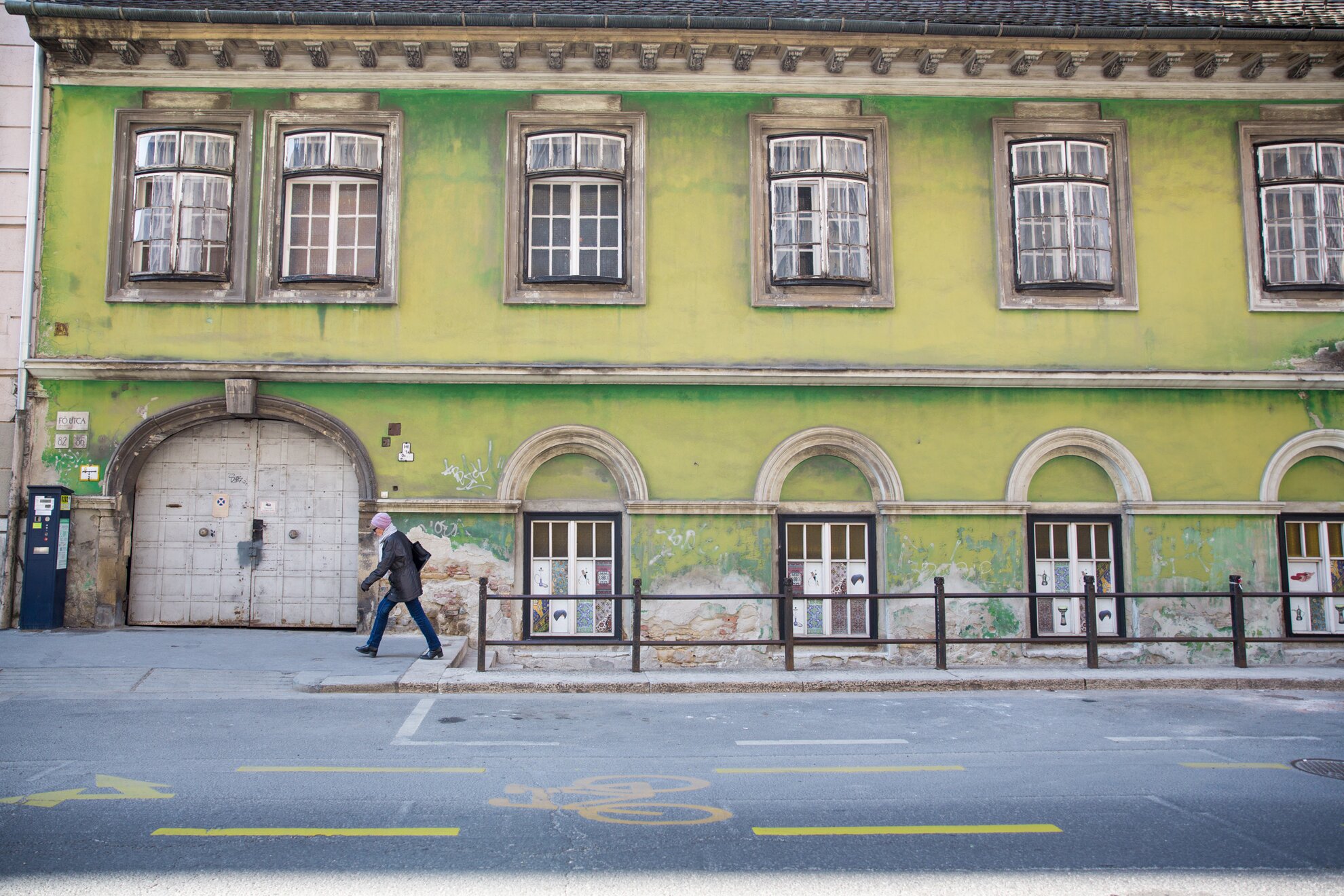
Unfortunately, Király Baths, which have been closed for a few years, can only be admired from the outside, but it is still worth a walk around the pale green building, which has stood on this site since 1566. While you’re here, rest under the shady trees in the sheltered Tarasz Sevcsenko tér – or if you fancy a beer, you can sit on the terrace of the cosy Ganz Pub. The square once hosted a city wall in the Middle Ages, and there’s an interesting church here: St. Florian’s Martyr Greek Catholic Church, which was raised by one and a half metres in 1937 because the area got flooded.
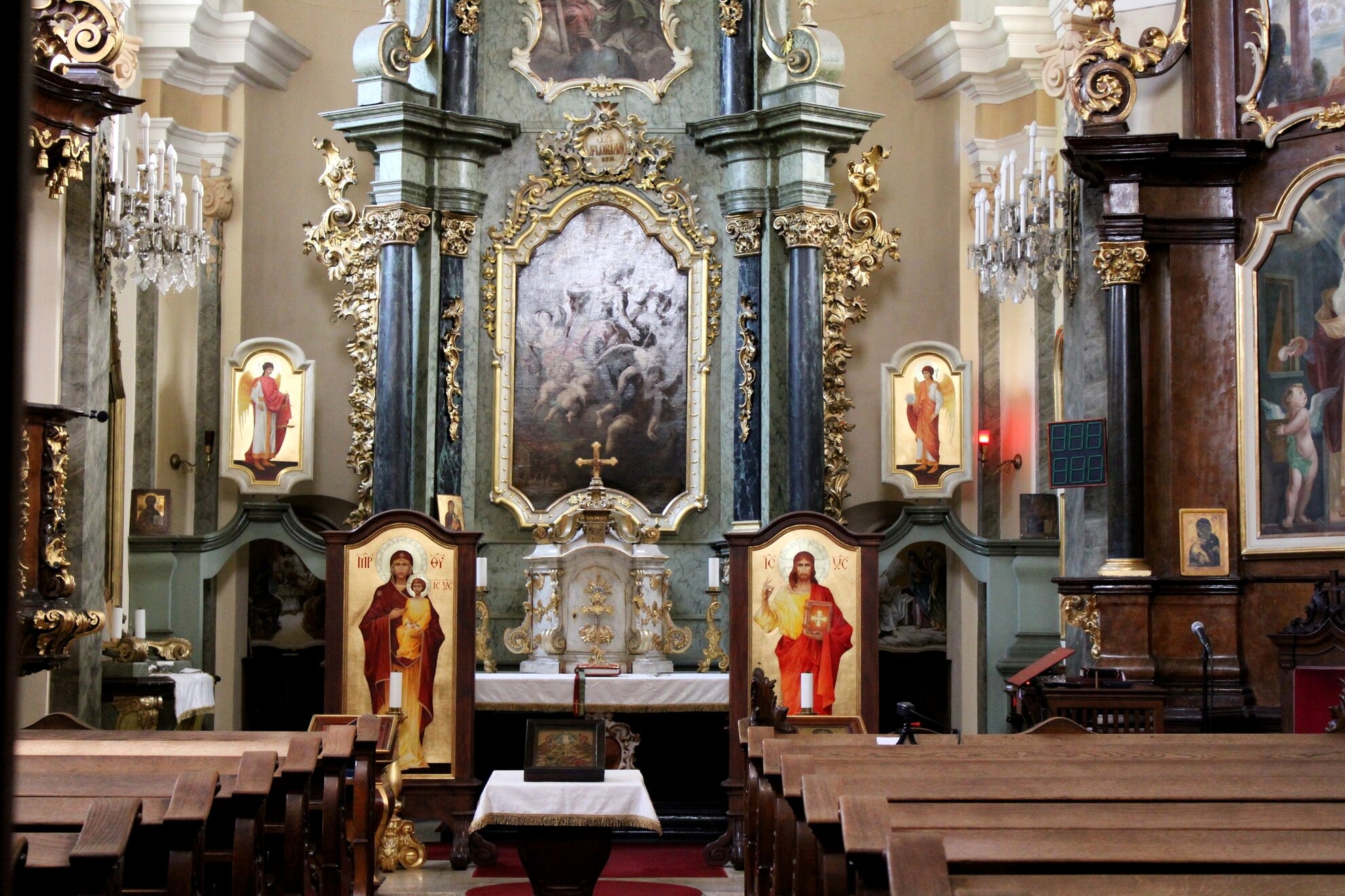
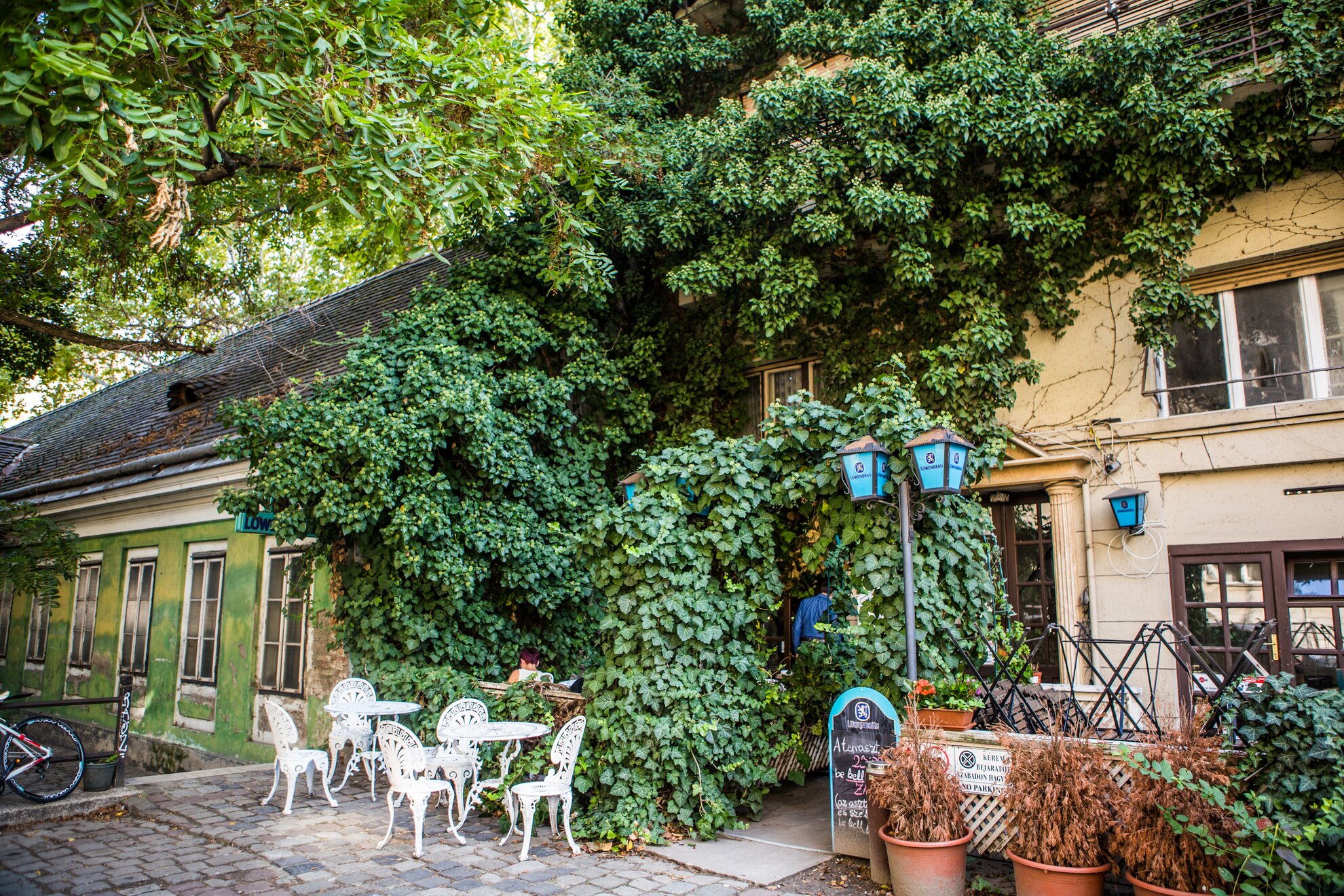
From the square, it is worth returning a little further along Ganz utca and Királyfürdő utca to Gyorskocsi utca, where the memorial plaque to the 1838 icy flood is on the wall of house No. 44 opposite the prison. From here, continue your adventure along Vitéz utca, which feels a little like a hidden oasis with its many trees and modern apartment buildings. To get to the charming and romantic part of Víziváros, you have to walk a little along Fazekas utca. Fortunately, the noise of the cars is 'muffled' by the view in front of us. From here, we can see the tower of Matthias Church and roofs reminiscent of Transylvanian architecture.
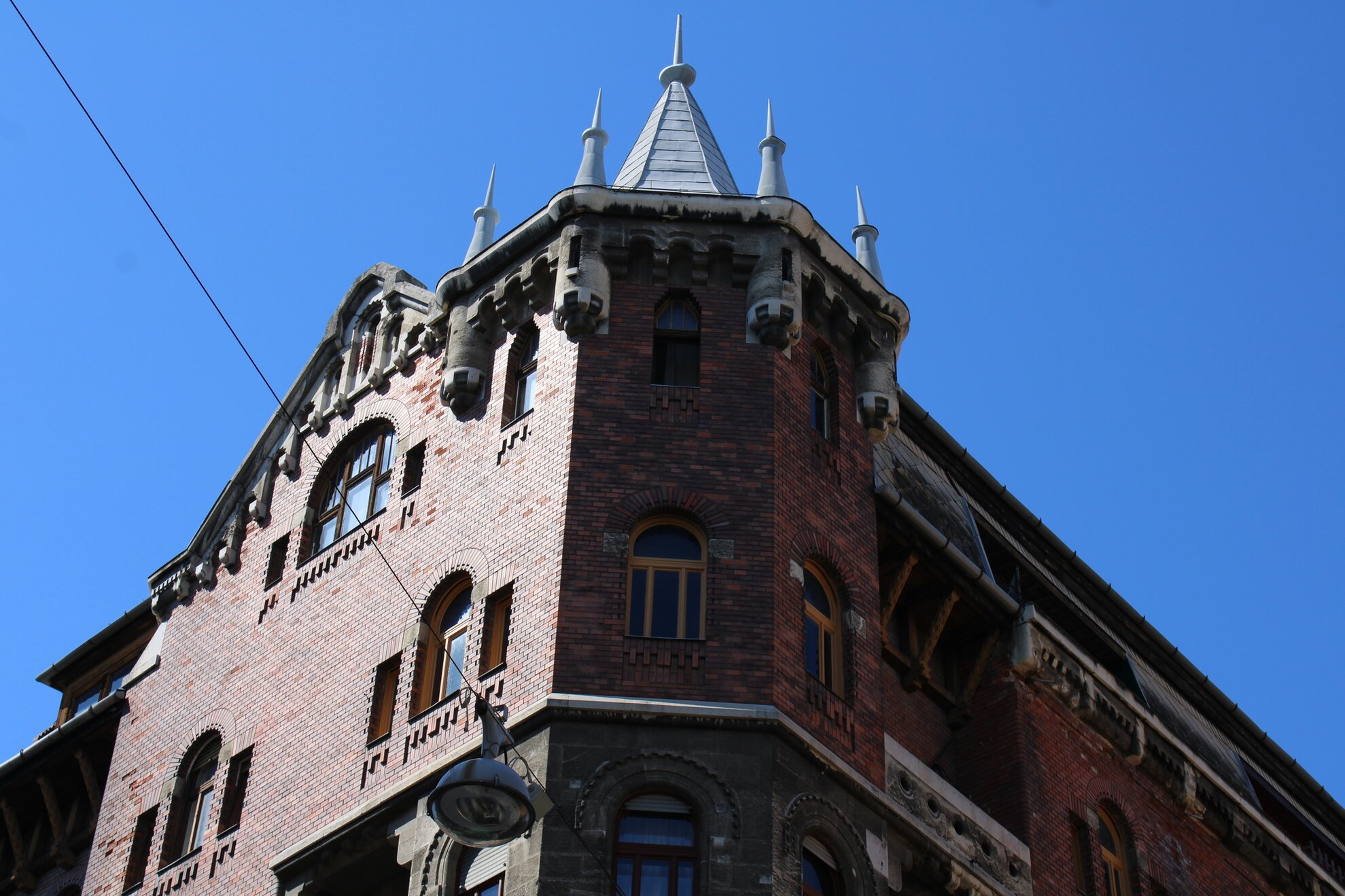
Stairs, Transylvanian architecture, and Harry Potter-style buildings
There are several brick buildings on Batthyány utca, but the one on the corner of Batthyány and Gyorskocsi utca is certainly one of our favourites. The arched gate is worth a closer look, as it features not only snail and leaf motifs but also two small human heads. The building was designed by Dr. Kornél Neuschloss-Knüsli, whose most famous work is the main gate of the Budapest Zoo, so if you think there’s a resemblance between the two, you’re right. The gate, the stone and brick architecture, the arched windows, the columns, and the small turreted section always remind us of the Harry Potter universe, although, another building in Víziváros could well be an extension of Hogwarts.
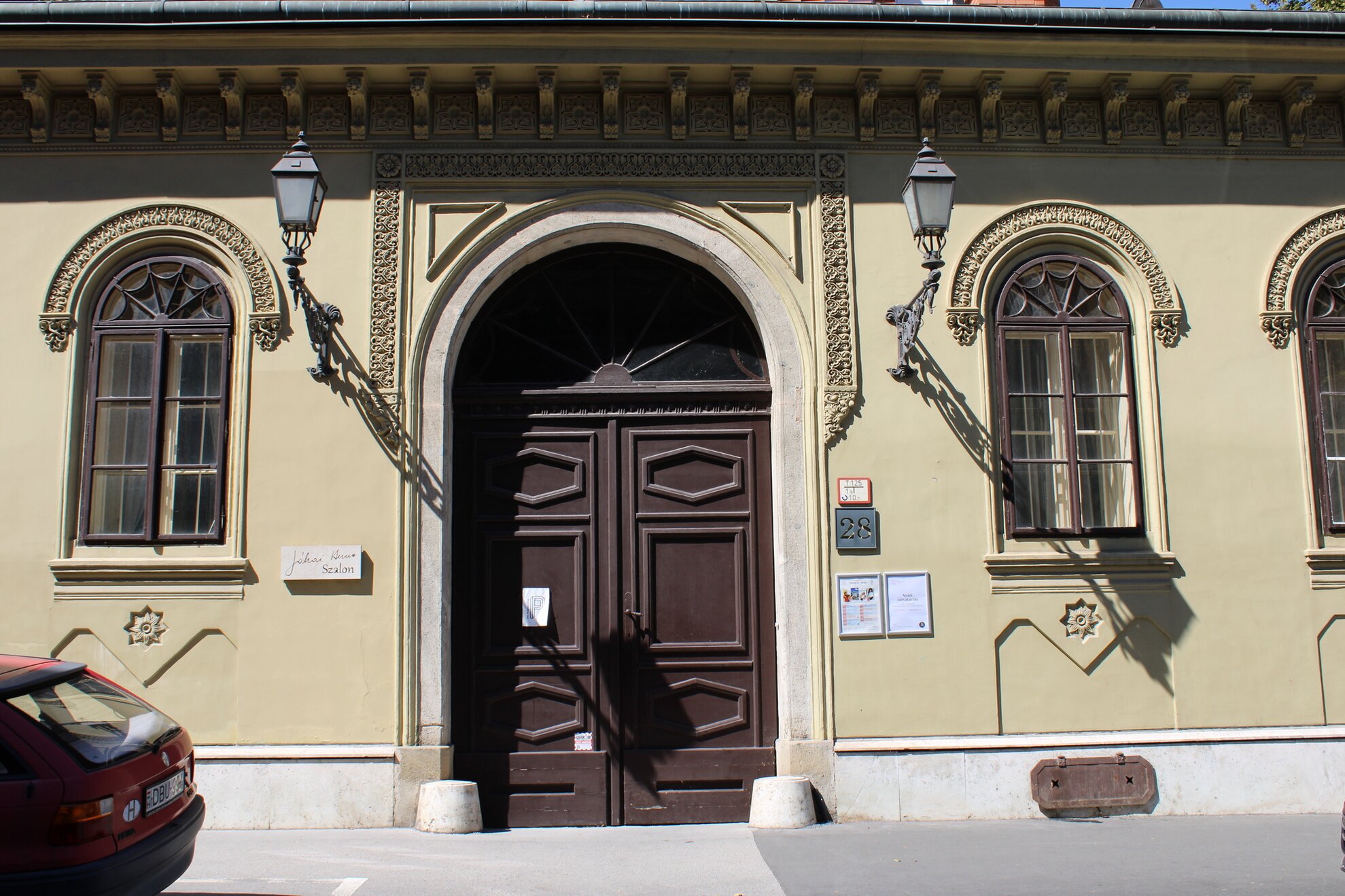
You soon arrive at Iskola utca, which we hold dear if only because it has great terraces, several stairways leading up to the Castle, and is full of romantic and Baroque-style monuments. One of these is 28 Iskola utca, which was built around 1860 and is now home to the Jókai Anna Szalon (a cultural centre).
You can take any of the stairs to the Castle, but we recommend Vám utca because it leads directly to the Toldy Ferenc High School. That's interesting because you can see the neo-Gothic school building (also reminiscent of Harry Potter) and the new contemporary building side by side. It’s no exaggeration to say that Toldy is one of the most beautiful schools in Budapest, founded by Franz Joseph I himself in 1854 under the name 'Budai Császári Királyi Főreáltanoda' (Imperial and Royal High School of Buda).
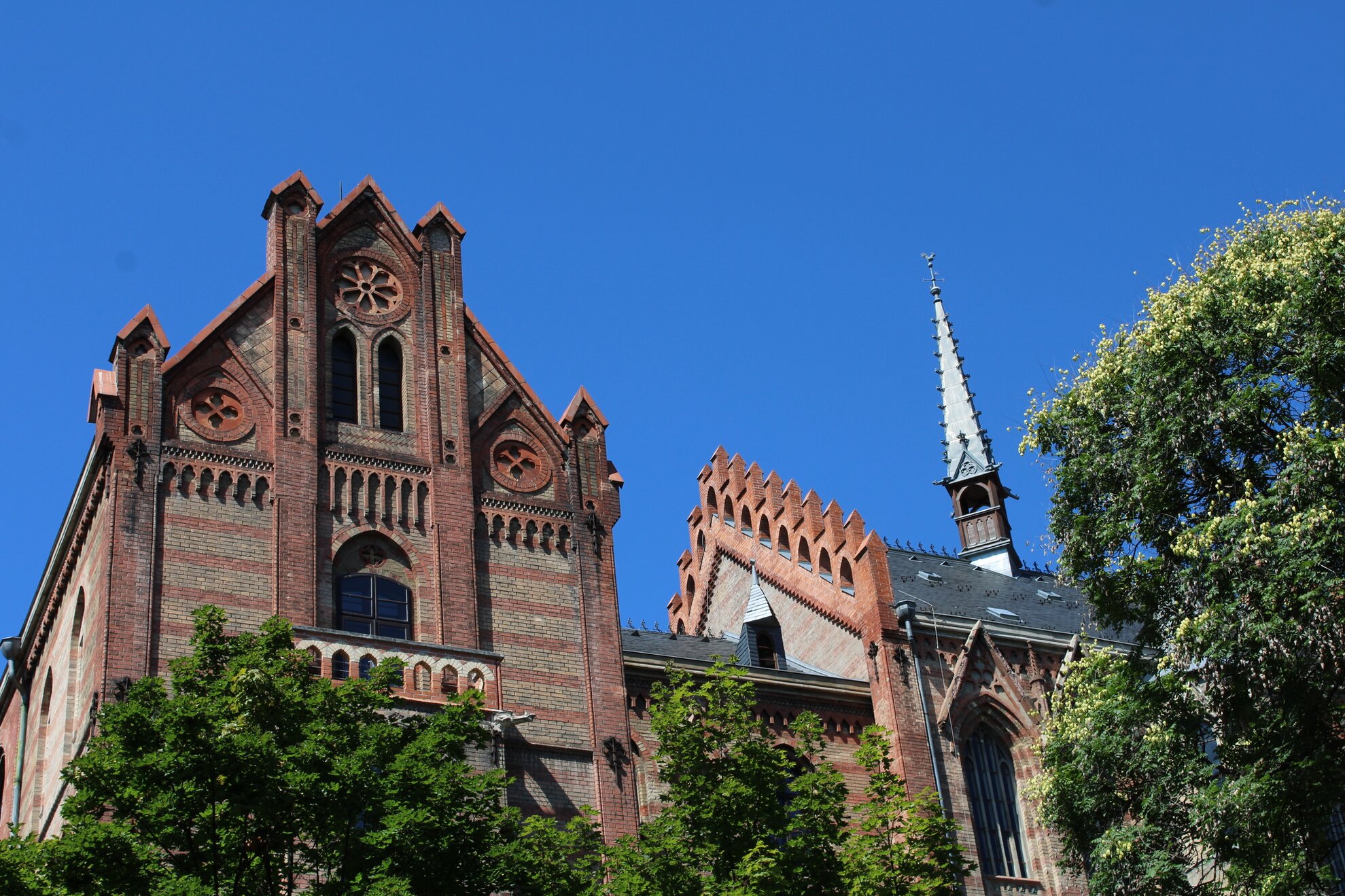
Cimbing the Ilona stairs, it’s worth looking back at the stunning view: the Parliament and the towers of the Saint Anne Parish are looming ahead. If you turn right along Szabó Ilonka utca, you will see some very out-of-place buildings, but don’t be surprised because Víziváros really does feature a wide variety of styles. The houses at 8, 10, and 12 Szabó Ilonka utca are special because folk architecture is not something you see every day in the centre of Budapest. These two buildings, along with the house with wooden gables and ornamentation in the adjacent Hunfalvy utca, were designed by Kálmán Reichl, who created the strange wooden-clad building himself.
The area around Corvin tér boasts the most colourful houses
You can spend a whole day in Víziváros, especially if you go from one end to the other, clambering up and down its cobbled streets. Corvin tér is one of the most beautiful and atmospheric squares in the city, and
it’s like stepping back in time to the 1700s. It has everything, from the Capuchin church to the Budai Vígadó and the row of Baroque houses.
it’s like stepping back in time to the 1700s. It has everything, from the Capuchin church to the Budai Vígadó and the row of Baroque houses.
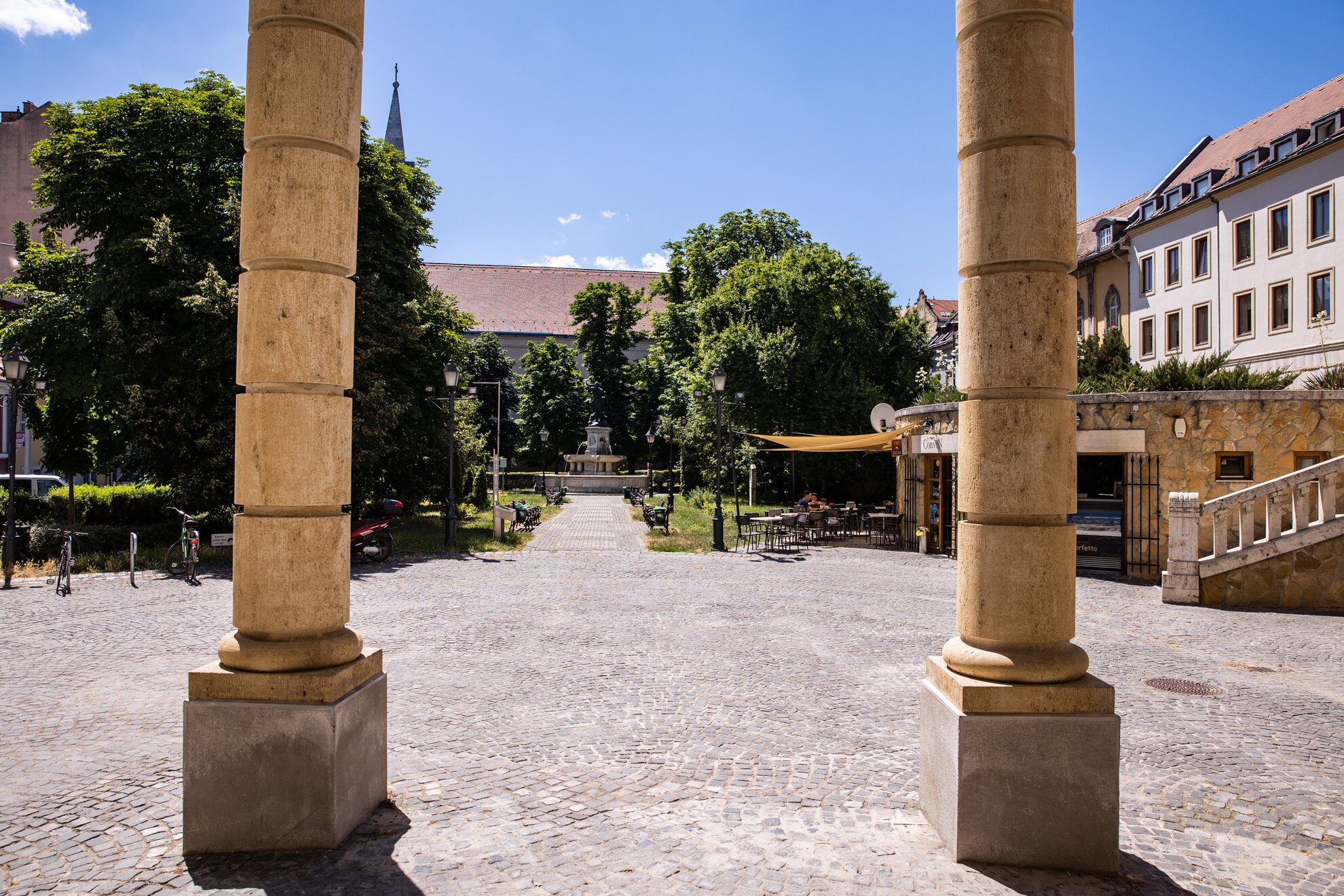
A highlight is the Gottlieb House, famous for its reliefs of King Matthias in unusual situations. The Baroque-style house was in fact decorated in the 1920s with odd scenes, referring to the square’s contemporary name, Mátyás király tere (King Matthias Square). The monarch is depicted as a scientist, a farmer, and a commander, while the entrance is decorated with a depiction of an alchemist’s workshop. The other is the neo-Baroque Lamm House at No. 11, built about 100 years ago and converted from a simple ground-floor house.
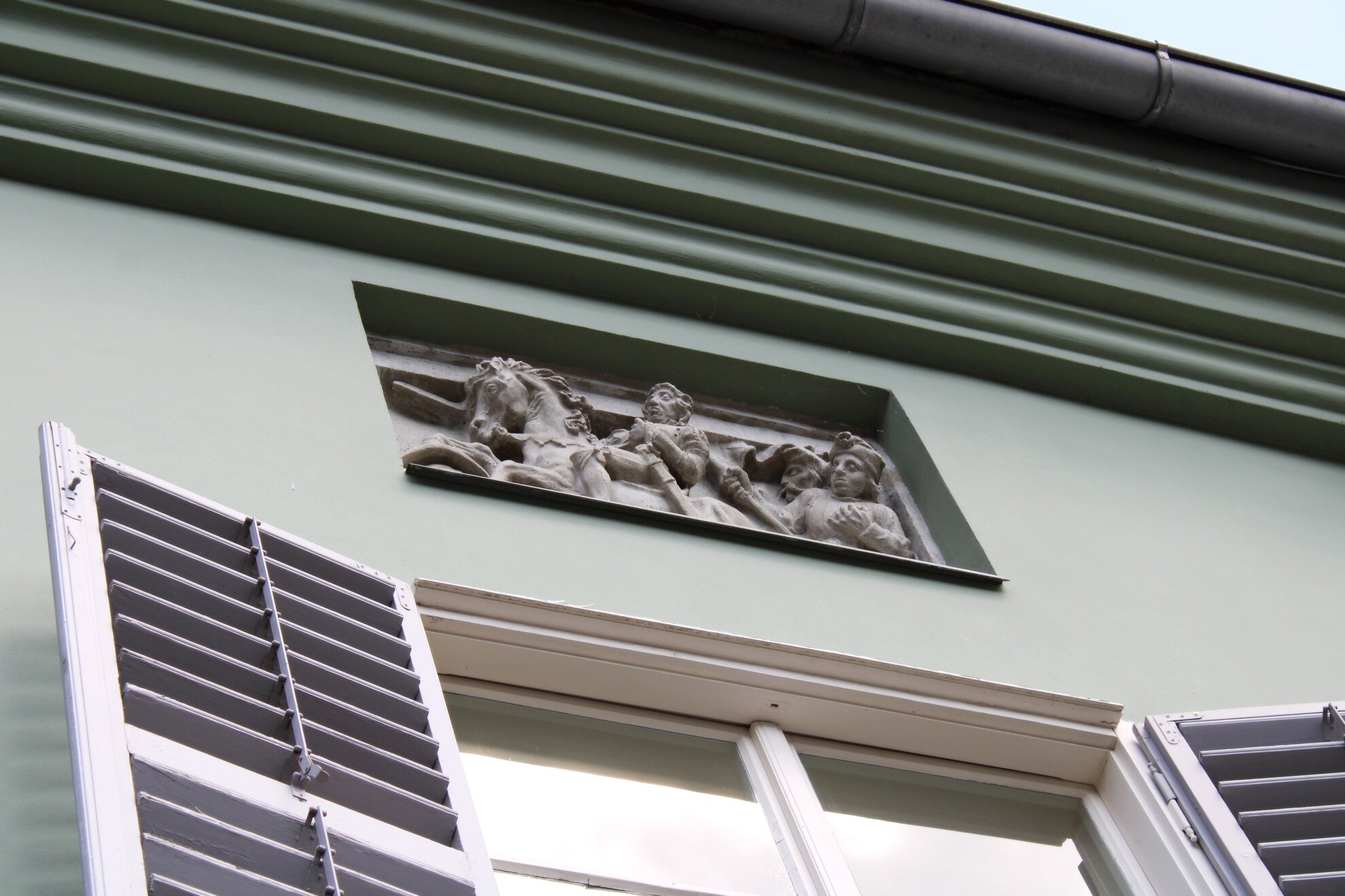
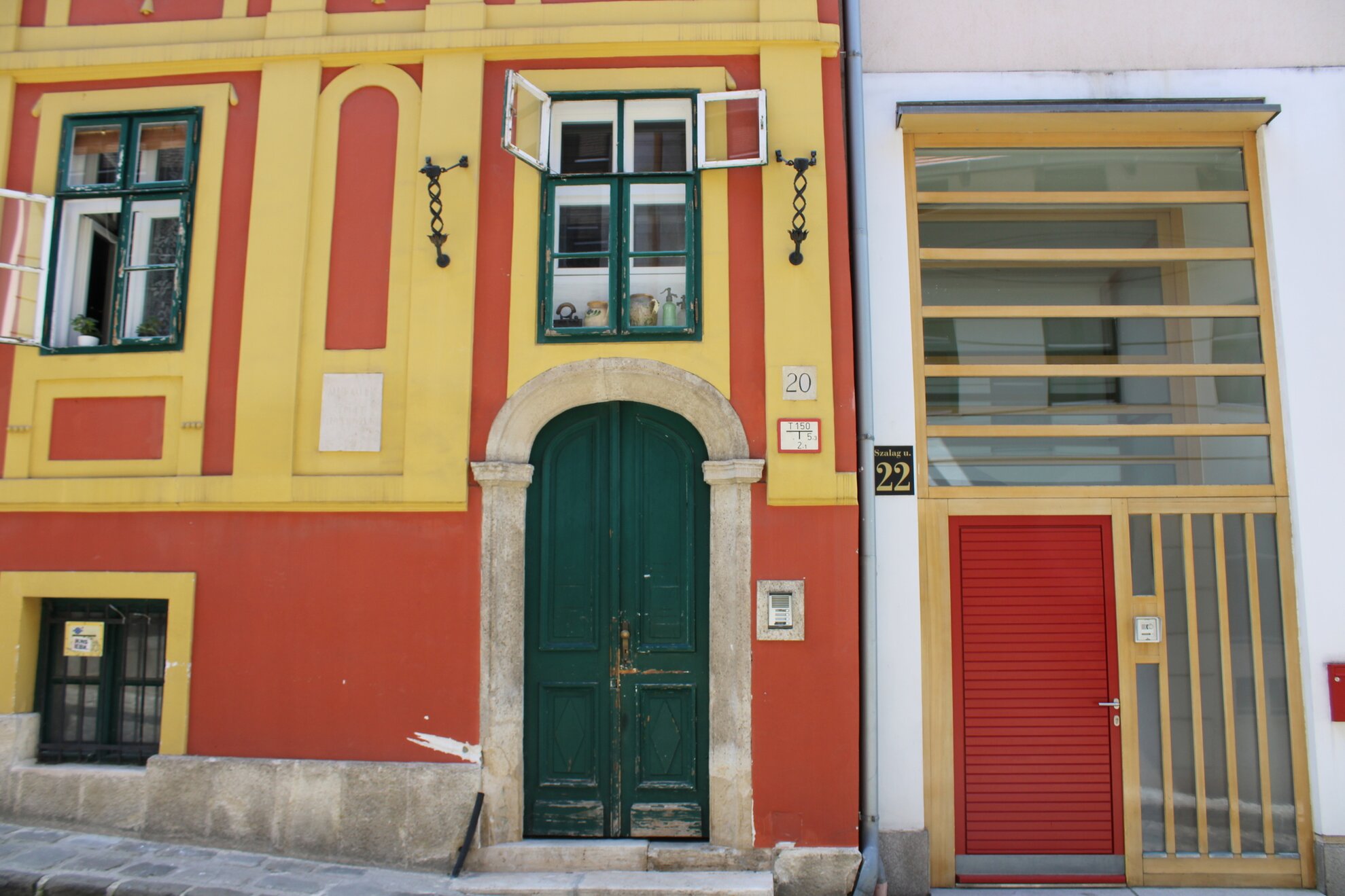
If you head down the cobbled Szalag utca towards the Castle, you will not only see a variety of contemporary buildings but also one of the most colourful houses in Víziváros. The fiery red and bright yellow facade of 20 Szalag utca catches the eye from afar, but that’s not surprising for a building built in 1795 in the Protestant Baroque style. Walking up the street, it is also worth taking a good look at the houses at 12 and 18 Szalag utca, and of course the Hunfalvy János Bilingual Secondary Vocational School of Economics and Trade around the corner.
The school was founded in 1884 to provide the children of Buda with a high-quality vocational school for upper-class trade, and the independent school building was completed in 1899. The plans were created by Ármin Hegedűs, the designer of the Gellért Hotel, and this school is worth looking upwards for its intriguing tower. We also like to look down Ponty utca, especially in summer, because at the beginning of the street, you can see a micro-oasis with fig trees, bushes, and lush greenery.
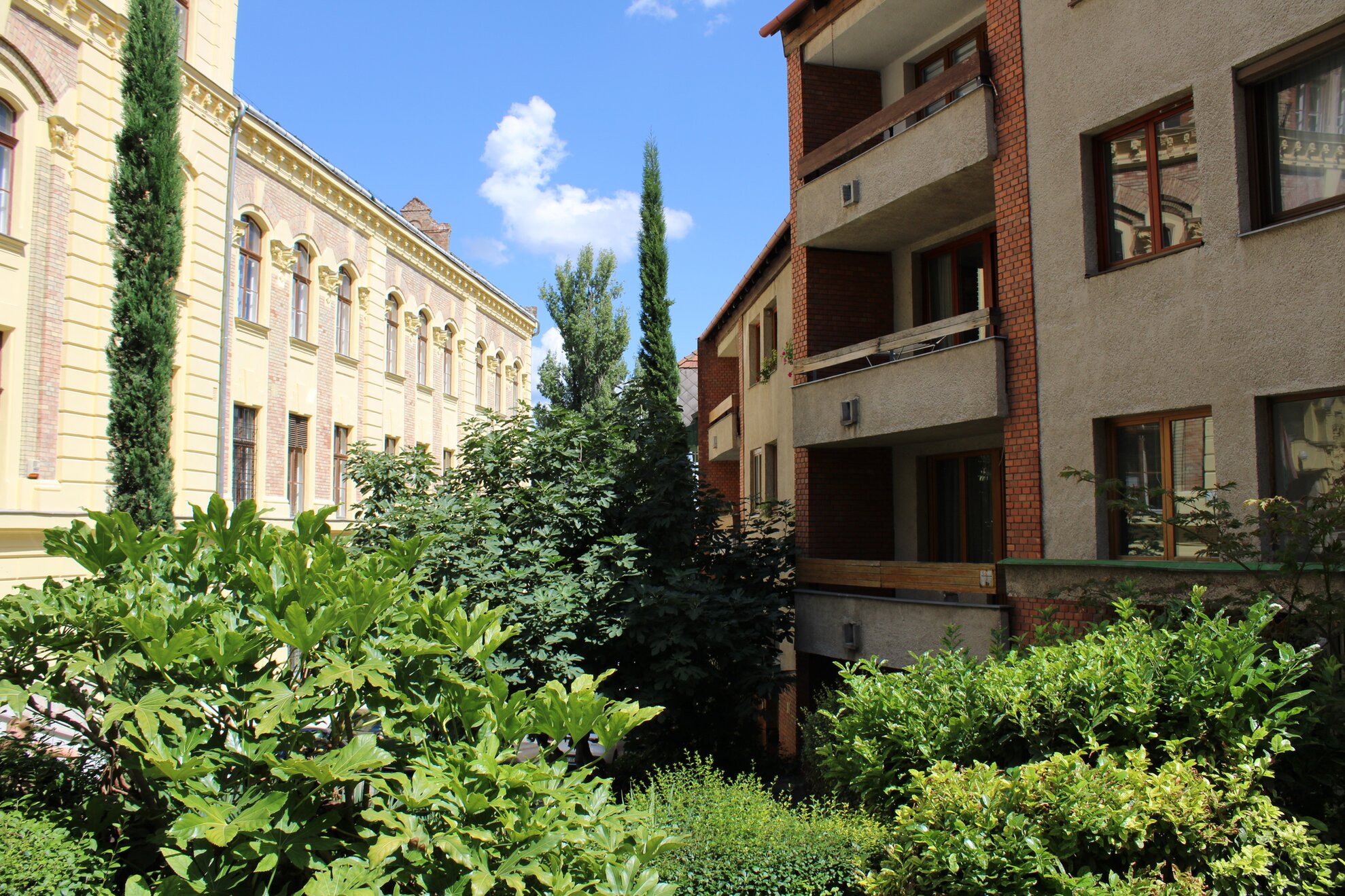
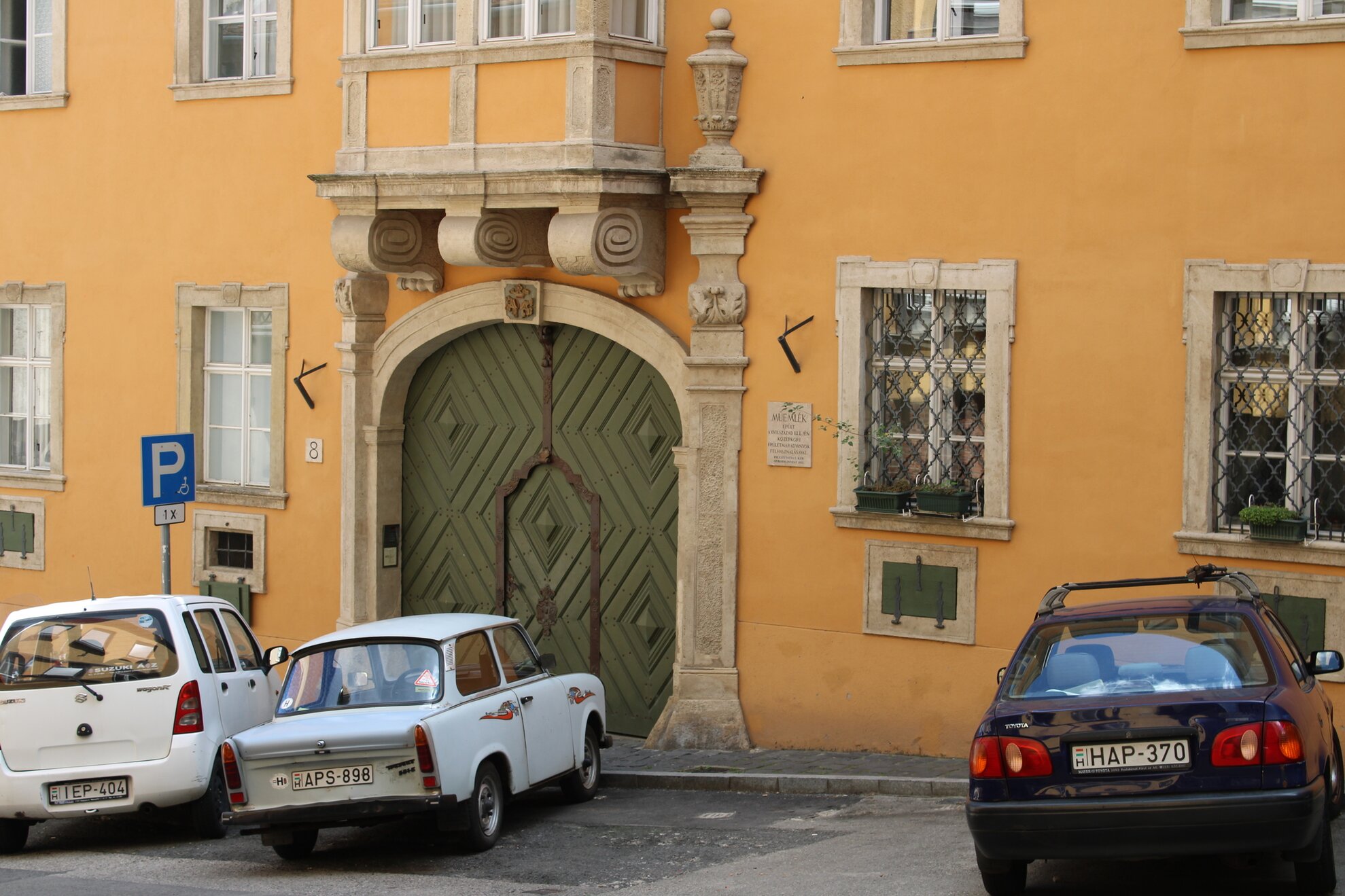
You can get lost in the various twists and turns and stairs here, but instead of climbing the steps of Szalag utca, we’ll continue straight on and almost immediately run into one, or rather two, exciting houses. The house at 7 Szalag utca. is not in very good condition today, yet it deserves attention as its foundations date back to the Middle Ages. Its arches from that period are still preserved. It was rebuilt in 1925 according to the plans of Kálmán Maróthy in Neo-Baroque style with Art Nouveau elements.
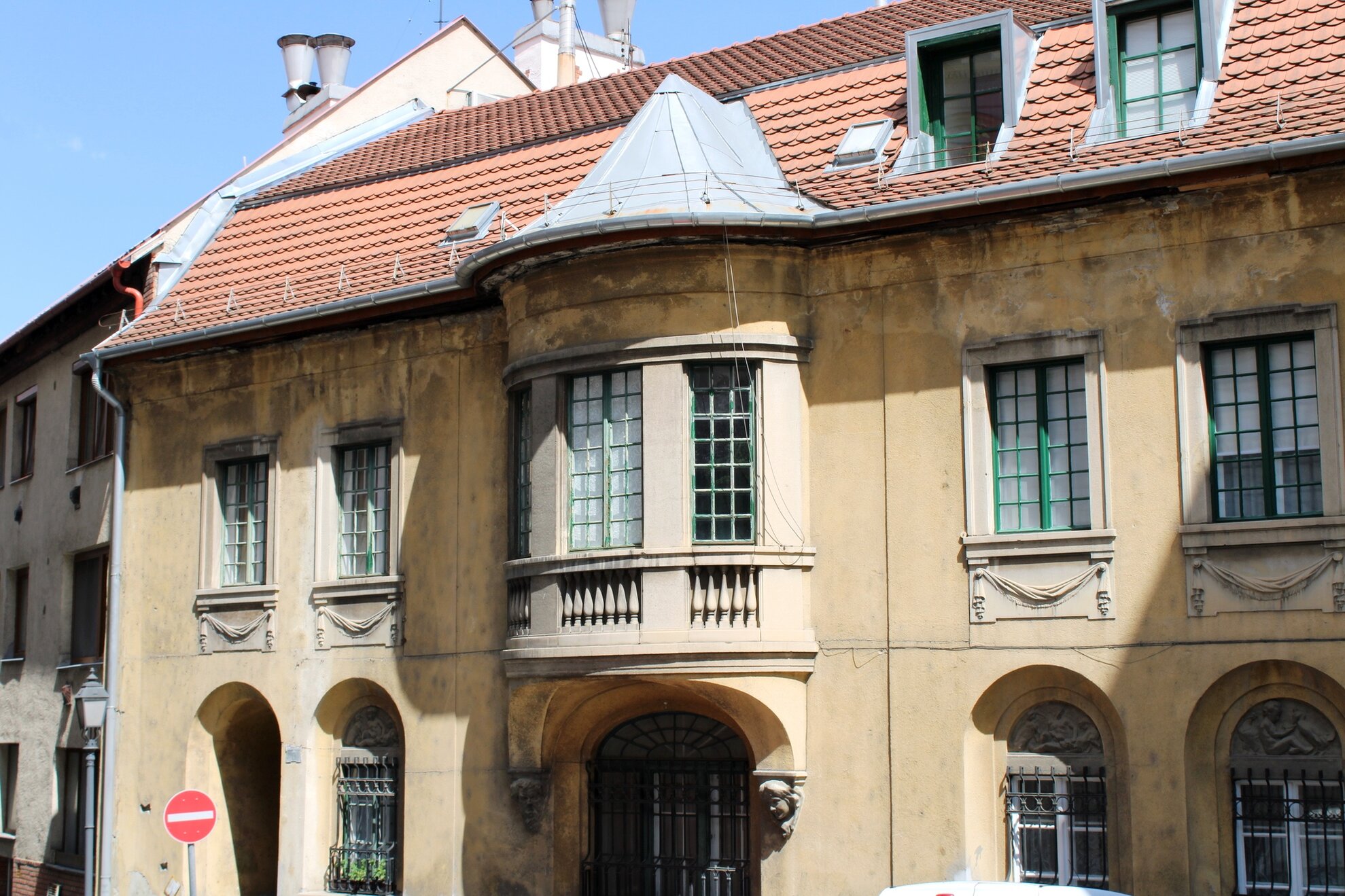
Other interesting structures in the area include 2 Szőnyeg utca and several buildings on Pala utca, but we particularly like No. 8. Especially as no one would ever guess that there is a garden behind the pastel green gate. The orange house was actually built around 1700, but this secret green zone was only added in the 1950s when it was surrounded and converted into a condominium.
We could go on endlessly with our adventures in Víziváros, which can be themed in a wide variety of ways, whether it’s a walk through a monument, a tour of a Baroque or historic palace, or even an exploration of contemporary architecture. Instead of the bustling Buda Castle or the Palace District in Pest, we suggest you spend a day exploring Víziváros, where you are sure to find hidden gems.

